The Force of Neptune
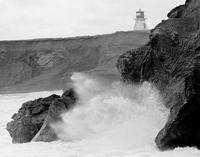
Sea energy is normally mentioned when the substitute list is made. What is the use of sea energy? We see the wind farms in our summits, the fuel tank can be filled with biodiesel in several areas, a power plant in Sangüesa feeds on straw...
On the contrary, we do not know if it has moved by the energy of the sea. We have recently read in this magazine that taking advantage of the construction of the new Mutriku dam will be launched a pilot plant that will take advantage of the energy of the waves. Is that all? It does not seem.
Oceans as a reservoir of energy
It is known that the oceans cover three quarters of the earth's surface, which makes them large energy stores. In the black background, the ocean becomes a source of energy due to the effects of the Moon and especially the Sun. How to exploit this resource? The removable energy from the sea can be divided into six large groups, which appear in the lower table.

It seems that each of these sets has its characteristics, difficulties and benefits. However, it can be said that, except in the case of sea winds, all are in sufficient preconceived conditions, that is, far from a reliable and expanded energy source. Some, like wave energy, may be close to being commercial. In fact, the commercial use of wave energy could today be in a situation similar to that of wind energy fifteen or twenty years ago.
FEB
This system takes advantage of the temperature difference between ocean surface waters and deep waters. The OTEC facilities are heat exchangers where a liquid evaporates through surface hot water to operate a turbine and, later, to be liquefied by cold deep water. Electric power is produced in the turbine. Electric power can be directly connected to the grid or used to produce another secondary source of energy, such as hydrogen from marine waters.
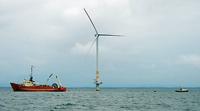
For proper system operation, the minimum temperature gradient is 20ºC. This situation only occurs in the tropical oceans, which greatly limits the availability of the system, apart from technological problems. It is also necessary to reach a depth of 1000 m in order to find this gradient. This takes power plants off the coast.
The OTEC system is not new. We have been talking about it for 18 years in Elhuyar magazine, and the truth is that what has been said and the concern that has been made remains. In various areas of the Pacific, especially in Hawaii, extensive research has been conducted and pilot plants have been launched, but we do not seem to have widespread commercial exploitation.

Salinity gradient
This offshore energy extraction system is the furthest away from commercial use. The foam can be usable by the middle of this century. The basis of this system is the exploitation of entropy that is generated in the mixture of fresh and salt water.

The mixture of salt water and fresh water allows to obtain an energy of up to 2.6 MW m 3 /s. For the extraction of this energy different ways have been proposed: to take advantage of the difference of steam pressure existing between fresh and salt water, or to use the different capacity of organic polymers to blow in fresh and salt water. However, semi-permeable membranes and those using osmosis processes seem the most accessible: pressure-retarded osmosis (PRO) and osmosis (RED).
In the RED process, cells filled with fresh or salt water are alternately used in which salt ions migrate into natural diffusion membranes and generate low voltage direct current. The membranes used in the PRO method are more permeable to water than salt, and if fresh and salt water are separated by these membranes, osmosis will force fresh water to move towards the salt water zone, obtaining a hydrostatic pressure of 26 bar.
This system has obvious advantages over other forms of marine energy extraction, especially for its continuous character and the possibility of building installations of all dimensions, both of the mouth of a river and of a river of great flow. However, many fields of technology still need great development.
Wind energy
Terrestrial wind energy is common among us. In other countries, such as Sweden, parks with wind turbines are being built at sea.

Technologically they do not have significant differences with respect to the terrestrial ones, in addition to the protection necessary to work in an environment highlights, but they have not increased so much, although the marine wind is stronger and stable than the terrestrial one. Its main reason is the cost, both installation and maintenance.
They must also overcome attitudes contrary to society. For example, fishermen have shown themselves against the marine wind farm that Greenpeace wants to boost against the Andalusian Tariff, because they believe it will reduce fishing.
Marine currents
In many places, marine currents have great force. Therefore, it could be thought that they can be used to generate electricity. Say and do. There are still no installations that power the power grid, but some pilot installations are already being tested, such as in the Bristol Channel of IT Power. The instruments of exploitation of the currents are structures located on the seabed, in the form of propellers that are placed under the water at a suitable depth. The current rotates the propeller blades. They are shaped like submerged wind turbines.
The advantages of this energy source focus on three: the availability of technology, its location on the coast and its low environmental impact. However, it also presents disadvantages such as the need for special locations and high installation and maintenance costs.
Tidal energy
Among us is quite well known the central of La Rance (Brittany), which takes advantage of the energy of the tides. There are others in the world, such as China and Canada, and tidal mills have been used on the Basque coast. The technology used by these plants is very simple: they are formed by a dam that stores water when the tide rises and a bouquet of turbines. However, it is not widespread and does not seem to extend much, due to the need for unique spaces such as the estuary and the environmental impacts it has.
Wave energy
In issue 209 of this magazine, specifically in May yesterday, a review was made to the energy of the waves, especially to the facilities located on the coast, with the excuse of the turbine that EVE plans to perform in Mutriku and that will use the technology OWC.
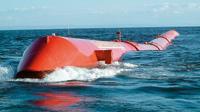
However, there are other alternatives for the use of the energy of the waves, among which stand out the facilities that are put in flotation or semi-floating in the sea, and that exist in the world countless projects to take advantage of this way the energy of the waves. One of them is the Pelamis, which is already in pilot sessions.

Pelamis is a long worm tube that floats on the high seas. This tube, 150 m long and 3.5 m in diameter, is divided into four sections. Pelamis can move both up and down and left and right by wave action, causing oil from a hydraulic circuit to pass through the electric power generating turbines. These worm-like structures would be anchored in a kind of net near the coast. A 1 km 2 pelamis park could supply 30 MW of electricity.
The energy exploitation of the seas is in its beginnings. Most projects have not gone through testing. However, it is one of the most promising and widespread futures in the field of alternative energies. Therefore, it should not be surprising that in a few years, significant parts of the world's power supply come from the sea.
Marine energy in the Basque Country
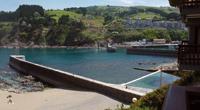
The project that the EVE has to carry out in Mutriku aims to demonstrate that marine energy has begun to start in Euskal Herria. In our case, the energy of tides, systems such as OTEC or the use of marine currents makes no sense because the tidal level is too low (4.5 m), the temperature difference between surface and deep waters is too low and there are no significant marine currents.
However, from the point of view of wave energy and sea wind energy are good choices. Only taking into account the direction and strength of the wind, it is possible to build marine wind farms on the Basque coast, but given the rapid sinking of the continental shelf, it does not seem that it will go this way due to economic problems.
The energy of the waves can have a future. According to the study conducted by César Vidal at the University of Cantabria, the Basque coast is an ideal place to take advantage of the energy of the waves. Vidal has highlighted two characteristics: on the one hand, the expressive force of the waves and, on the other, its low variability of direction. In fact, in the Cantabrian the waves dominate the northwest.
In addition to Mutriku, there will soon be another pilot plant in the sea of Bizkaia. Promoted by Iberdrola, at the height of Cabo Pescador de Santoña (Cantabria) a floating plant will be built that will use wave energy between 1.5 and 3 kilometers of the coast. Ocean Power Technologies technology will be used. The plant will consist of ten 150 kW buoys that will be connected by a cable to the mains. It is about determining the production curve, the adaptability of the tidal system to the height difference, maintenance problems, operating costs, the interconnection between units and network and investment costs.
Basque researchers and technologists do not want to stay behind in this field. As a result, the Tecnalia corporation has formed a working group within the Oceantec project to work in the marine energy technology sector. It has four main objectives: to develop the technological activity necessary for the creation of industry in the field of marine energies; to develop an energy generation system; to create a pilot infrastructure and to create the Basque Marine Energy Center.
On the other hand, the activity of the EVD will not be limited only to the Mutriku initiative. In this sense, an evaluation of the resources is being carried out, as are the characteristics of the waves that hit the Basque coast. In this context, the report of Professor Vidal mentioned above is framed. It also aims to promote the Basque sector of marine energy.
The challenges of marine energy
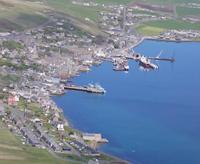
In view of what was heard in the day organized by the EVD, one might think that the situation of marine energy is similar to that of wind energy about fifteen years ago. In fact, some technologies are developed and we are able to make the leap to the commercial sector. We can be on the doorstep of the marine energy boom. Among the experts, in addition to the reliability of the technologies, two main concerns were raised: on the one hand, turning wave energy technologies into attractive to the financial world to attract investments and launch the energy business of the waves, and on the other, minimize the visual impact of the energy use facilities of the waves.
Some experts emphasized the reliability of technology, and especially the development of system comparison standards. That is, in the need to implement an ISO type marine energy technology. In this sense, it was considered very important the work done by the EMEC center located in the Orkney Islands of Scotland. This organization is working on the development of these standards and has worked for four years on an OWC system that is now being tested by Pelamis.





